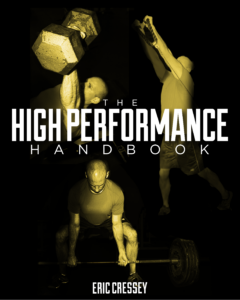
Strength and Conditioning Programs: Methods vs. Applications
Each week, invariably, I get a few email inquiries that go something like this:
What do you think of <insert training device or method here>?
The “training device or method” seems to come in waves. In training, for a while, it was kettlebells. Then it was Crossfit. In the rehab world, platelet-rich plasma (PRP) injections are a hotter topic these days, and I’d expect stem cell therapy for musculoskeletal issues to be the next wave.
In the baseball world, people then asked about J-Bands. Then it was long toss. Now, it always seems to be weighted balls.
Most of the time, people are asking the wrong question.
[bctt tweet=”You can’t truly evaluate a method or device without considering its application.”]
Using the weighted balls example, I love them and have used them in various capacities since 2007. I’ve used them with teenage athletes and I’ve used them with a Cy Young Award winner. I’ve used them with 1st round draft picks and 50th round draft picks.
You know what else? There were a lot of pitching coaches using them before I even started. And, they were well established in the track and field throwing community long before the baseball world adopted them. And, we now have plenty of studies in scholarly journals supporting their use. However, that doesn’t mean they’re right for every single application.
If you throw weighted balls a week after you have shoulder surgery – and then blow out the shoulder again – is the problem the weighted balls? Or, is the problem that you were an idiot in your application of this device/method?
If your 8-year-old does an aggressive weighted ball program and winds up with a growth plate fracture, is it the fault of the weighted balls or the program? Or, are you just a misdirected father who put the carriage way in front of the horse?
The weighted balls are the device/method. The programming volume, implement load, throwing technique, time of year, and athlete preparedness are some of the variables that constitute the broader “application” category.
My High Performance Handbook has been really popular across a number of training populations, but it’s a horrible fit for you if you had spine surgery last week.
A lot of people have great fitness success with Crossfit programs, but many wind up banged up because their application of these principles is wrong. They may not adhere to solid technique, or they may have pre-existing structural pathologies and movement impairments that should lead to contraindicating certain exercises.
Front squats can be an awesome exercise. They aren’t going to feel so good if you have a degenerative hip or acromioclavicular joint injury, though.
J-Bands are a huge training asset to your arm care routine when used correctly. If you’re going to use them incorrectly, though, you’re better off leaving them in your equipment bag.
Stop contraindicating methods and devices, and instead start improving your ability to critically think and evaluate applications. The best coaches that I know aren’t just the guys with the most tools in their toolbox; they’re the carpenters that know which tool is the best fit for the job at hand.



